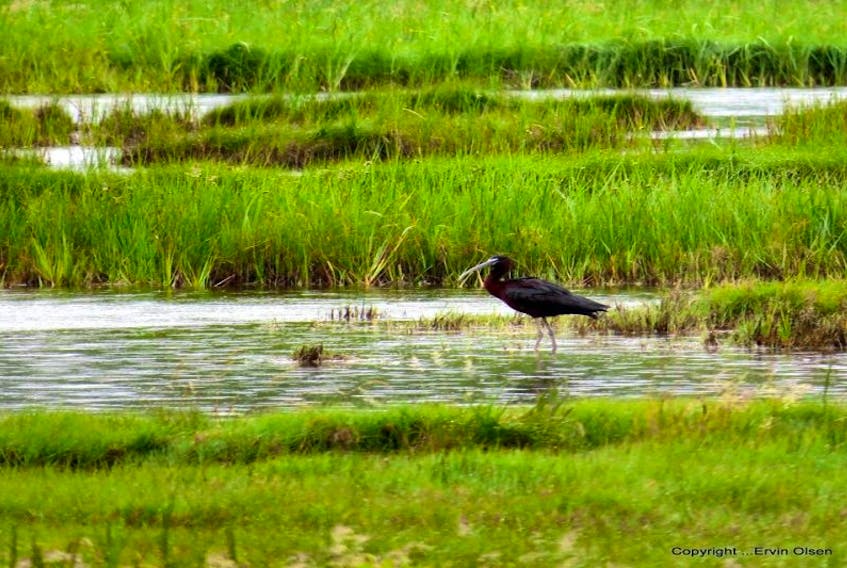Ervin Olsen took a picture of a Glossy Ibis on Thursday morning on the Chemin des Gasson Road in Amiraults Hill.
The species breeds in warm regions of Europe, Asia, Africa, Australia, and the Atlantic and Caribbean regions of the Americas.
They feed in shallow water and show a preference for marshes at the margins of lakes and rivers. They also frequent lagoons, floodplains, wet meadows, swamps, reservoirs, sewage ponds, paddies and irrigated farmland, searching for adult and larval insects such as aquatic beetles, dragonflies, damselflies, grasshoppers, crickets, flies and caddisflies. They also eat leeches, mollusks (e.g. snails and mussels), crustaceans and occasionally fish, amphibians, lizards, small snakes and nestling birds.
For more information about the Glossy Ibis, visit this link.
Ervin Olsen took a picture of a Glossy Ibis on Thursday morning on the Chemin des Gasson Road in Amiraults Hill.
The species breeds in warm regions of Europe, Asia, Africa, Australia, and the Atlantic and Caribbean regions of the Americas.
They feed in shallow water and show a preference for marshes at the margins of lakes and rivers. They also frequent lagoons, floodplains, wet meadows, swamps, reservoirs, sewage ponds, paddies and irrigated farmland, searching for adult and larval insects such as aquatic beetles, dragonflies, damselflies, grasshoppers, crickets, flies and caddisflies. They also eat leeches, mollusks (e.g. snails and mussels), crustaceans and occasionally fish, amphibians, lizards, small snakes and nestling birds.
For more information about the Glossy Ibis, visit this link.









